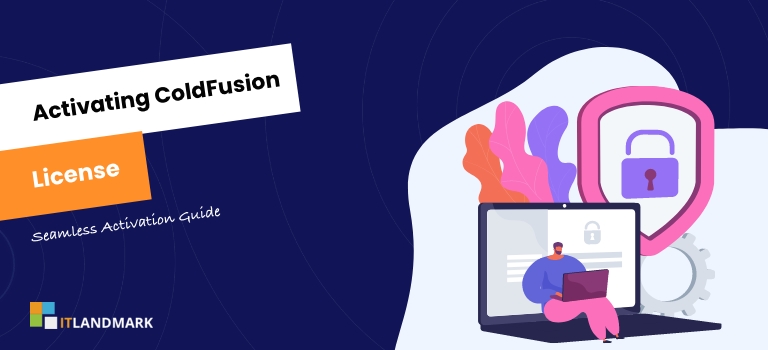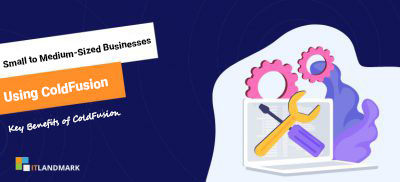
So, you’ve decided to take the plunge and invest in ColdFusion for your web development needs. That’s a smart move considering its robust features and powerful capabilities.
However, before you can start enjoying all that ColdFusion has to offer, there’s one crucial step that you’d need to undertake – getting it licensed and activated. This might sound a bit technical and daunting, but don’t worry, we’re here to walk you through the process.
In this article, we’ll guide you step-by-step on how to get your ColdFusion license and activate it. We’ll demystify the jargon, simplify the technicalities, and help ensure that your experience is as smooth as possible.
Whether you’re a tech whiz or someone who’s just dipping their toes into the world of web development, we’ve got you covered.
All set? Let’s dive right in!
Table Of Contents
- Understanding the Types of ColdFusion Licenses
- Obtaining a ColdFusion License
- Installing ColdFusion
- Activating Your ColdFusion License
- Troubleshooting Common Issues
- Frequently Asked Questions
- Conclusion
Understanding the Types of ColdFusion Licenses
- Consider various licenses when setting up your server, each offering unique features and benefits.
- Adobe ColdFusion, a popular rapid web-application development platform, offers two main license types: Standard and Enterprise.
- Standard License:
- Designed for small to medium-sized businesses.
- Provides robust tools for creating and deploying web applications.
- Includes features like PDF generation, data services, and client-side database integration.
- Enterprise License:
- Tailored for larger businesses and organizations.
- Includes all features of the Standard license.
- Offers additional capabilities like server clustering, load balancing, and support for high-availability environments.
- Includes advanced features such as real-time analytics, a comprehensive suite of security tools, and multi-site management.
- It’s crucial to understand the differences between these licenses and choose the one that aligns with your organization’s needs and budget.
Obtaining a ColdFusion License
- Ready to make your software official? Here’s how to secure a valid license for your ColdFusion application.
- Purchasing a License:
- Obtain a ColdFusion license by purchasing it from the Adobe website.
- Adobe offers three types of ColdFusion licenses: Standard, Enterprise, and Developer.
- License Types:
- Standard Edition: Ideal for small to medium-sized businesses.
- Enterprise Edition: Designed for large businesses needing advanced features and scalability.
- Developer Edition: Free and intended for single developers to build and test applications.
- How to Purchase:
- Choose the license type that best suits your needs.
- Visit the Adobe ColdFusion online store to complete your purchase.
- Activation:
- After purchasing, Adobe will provide a unique serial number, which serves as your license key.
- Use this license key to activate your ColdFusion server.
- Note that the license key is only valid for the specific edition you purchased and cannot be used for other editions.
- Important Considerations:
- Licenses are not transferable between different servers; each server requires its own unique license key.
- Manage your license keys carefully to ensure compliance.
Installing ColdFusion
- Now that your license is set, it’s time to install your new software and get started.
- Step 1: Download the Installer:
- Visit Adobe’s official website to download the ColdFusion installer.
- Ensure you download the version that matches your purchased license.
- Step 2: Run the Installer:
- Execute the installer on your server. The process is straightforward, much like installing any other software.
- If you’re using the Developer Edition, select it during the installation.
- Step 3: Enter Your Serial Number:
- After the installation is complete, you’ll be prompted to enter the serial number provided with your license purchase.
- Step 4: Restart Your Server:
- Restart your server for the changes to take effect.
- Step 5: Verify Installation:
- Open a web browser and navigate to your server’s IP address followed by `:8500` to verify that ColdFusion is running.
- You should see the ColdFusion Administrator login screen.
- Step 6: Log In:
- Log in using the username and password you set during installation.
- Congratulations! You’ve successfully installed and activated ColdFusion on your server.
Activating Your ColdFusion License
- With your software installed, the next step is getting your ColdFusion license up and running.
- 30-Day Trial Period:
- After installation, Adobe provides an automatic 30-day trial period for ColdFusion.
- Purchasing a License:
- During the trial, visit the Adobe website to purchase your ColdFusion license.
- Choose the license type that best suits your needs: Standard, Enterprise, or Developer.
- Receiving Your License Key:
- After purchasing, Adobe will send you a License Key, which is essential for activating your ColdFusion license.
- Activating Your License:
- Launch the ColdFusion Administrator tool.
- Navigate to the ‘System Information’ page.
- In the ‘License’ section, enter your License Key.
- Click the ‘Submit Changes’ button to activate your license.
- Ready to Go:
- With your license activated, you’re all set to start using ColdFusion to its full potential.
Troubleshooting Common Issues
- Facing Some Issues? No Problem! Let’s Address Common Problems and Get You Back on Track.
- Issue 1: ‘Invalid License Key’ Error:
- Cause: This error usually occurs when the license key is entered incorrectly or mistyped.
- Solution:
- Double-check the license key you received with your ColdFusion purchase.
- Ensure it is entered exactly as it appears, including case sensitivity.
- If the issue persists, contact Adobe support for further assistance.
- Issue 2: ‘License Expired’ Notification:
- Cause: This typically happens when the trial period for your ColdFusion license has expired.
- Solution:
- If you’ve purchased a license and still see this notification, you may need to refresh your license key.
- Go to the ‘Server Settings’ tab in ColdFusion Administrator, click on ‘Licensing’, and enter your new license key.
- If the problem continues, contacting Adobe support is recommended.
- Remember: Reaching out to Adobe support is always a good step if these solutions don’t resolve the issue.
Frequently Asked Questions
1. How much does a ColdFusion license cost?
A ColdFusion license costs can range from $2,499 for a Standard edition to $9,499 for an Enterprise edition. The price varies depending on the features and capabilities you need. Remember, it’s a one-time cost which includes updates and support from Adobe.
2. How do I know which version of ColdFusion I need?
The version of ColdFusion you need depends on the specific requirements of your project. If you’re just starting out and learning, the free Developer edition may be best. For commercial use, Standard or Enterprise versions are recommended due to their additional features and capabilities. Always check the product’s official website for the most updated information on each version.
3. What hardware do I need to run ColdFusion?
ColdFusion can run on most modern computers. You’ll need a system with at least a 1GHz CPU, 2GB of RAM, and about 4GB of available disk space for the software and its components. It can run on Windows, macOS, or Linux operating systems.
4. Is ColdFusion compatible with other software?
Yes, ColdFusion is compatible with many other software. It can integrate with HTML, CSS, JavaScript, and databases like SQL Server or Oracle. This means you can use it alongside these technologies to build and manage powerful web applications more quickly and efficiently.
5. Does ColdFusion have any built-in security features?
Yes, ColdFusion does have built-in security features. It includes options for authentication, authorization, and encryption to help protect data. These features allow users to restrict access to certain pages or applications, check user credentials, and encrypt sensitive information like passwords. These measures can help keep your data safe and secure.
Conclusion
ColdFusion is a powerful platform for building web applications and requires proper licensing in order to access its full capabilities.
It’s important to understand the different types of ColdFusion licenses available before you get started, but once you do, obtaining a license and installing ColdFusion is relatively straightforward.
Finally, activating your license is key to unlocking all the features that come with your version of ColdFusion, so be sure to follow the steps outlined here to get ColdFusion Licensed and Activate it.
With this information, you can start building web applications more efficiently than ever!



